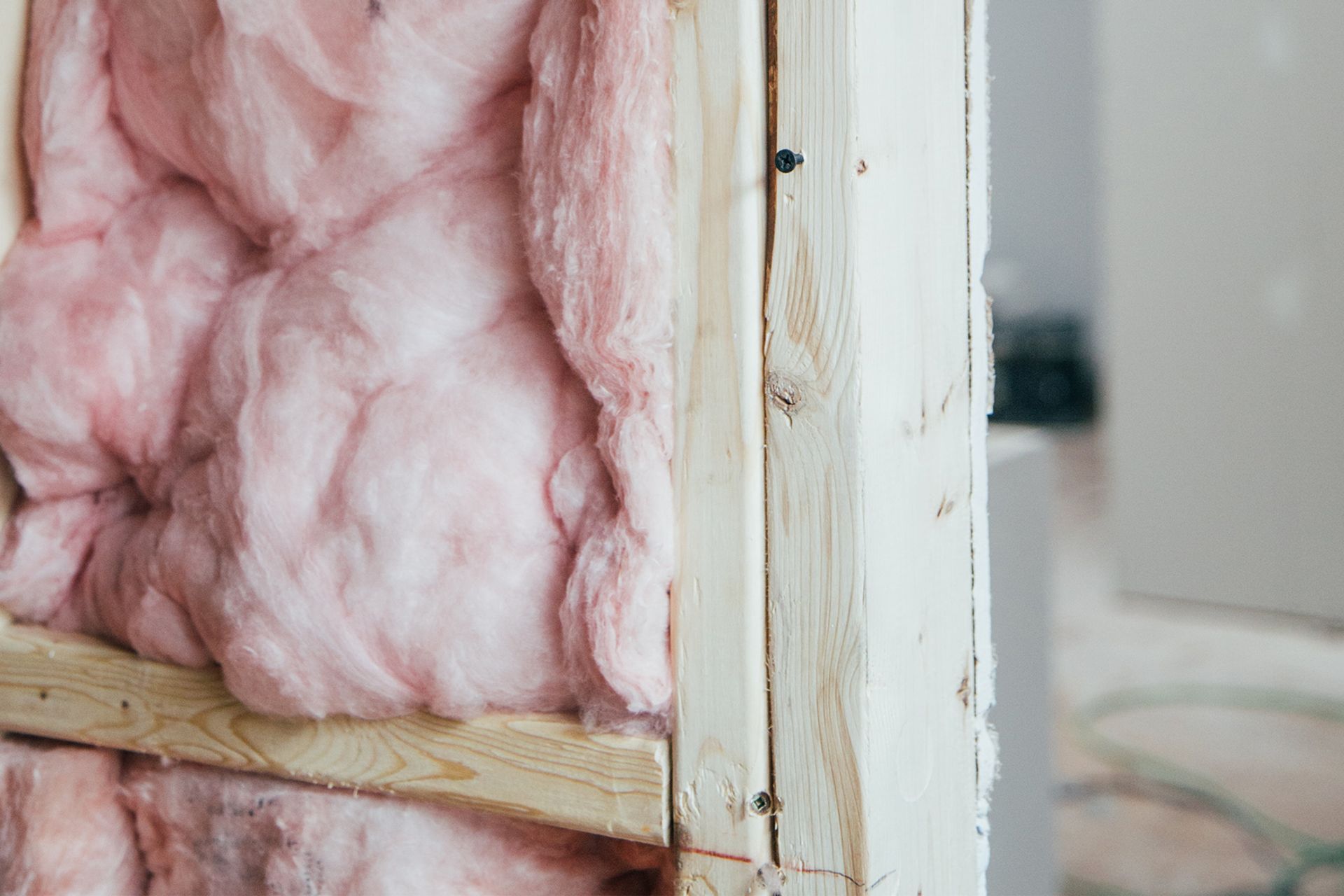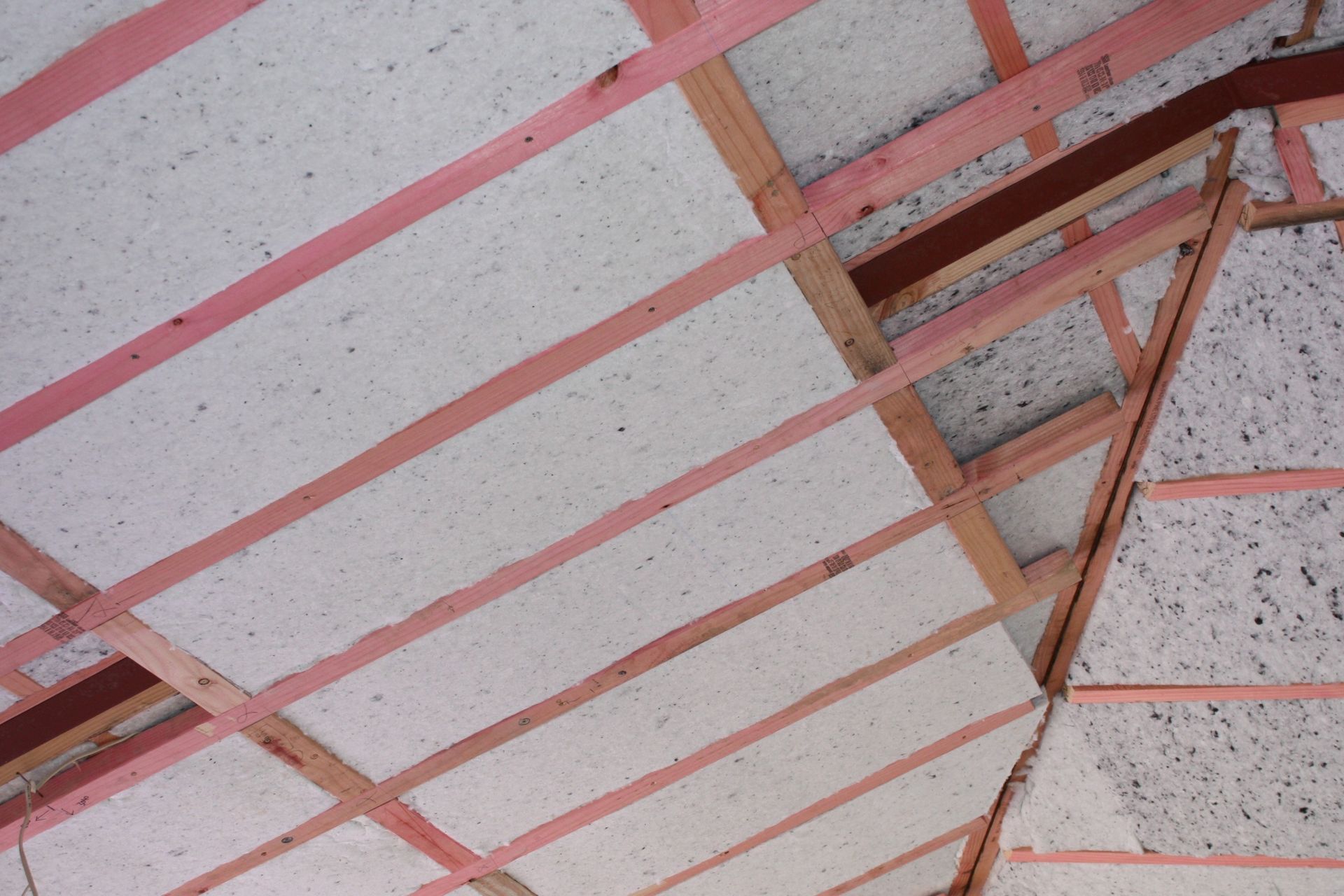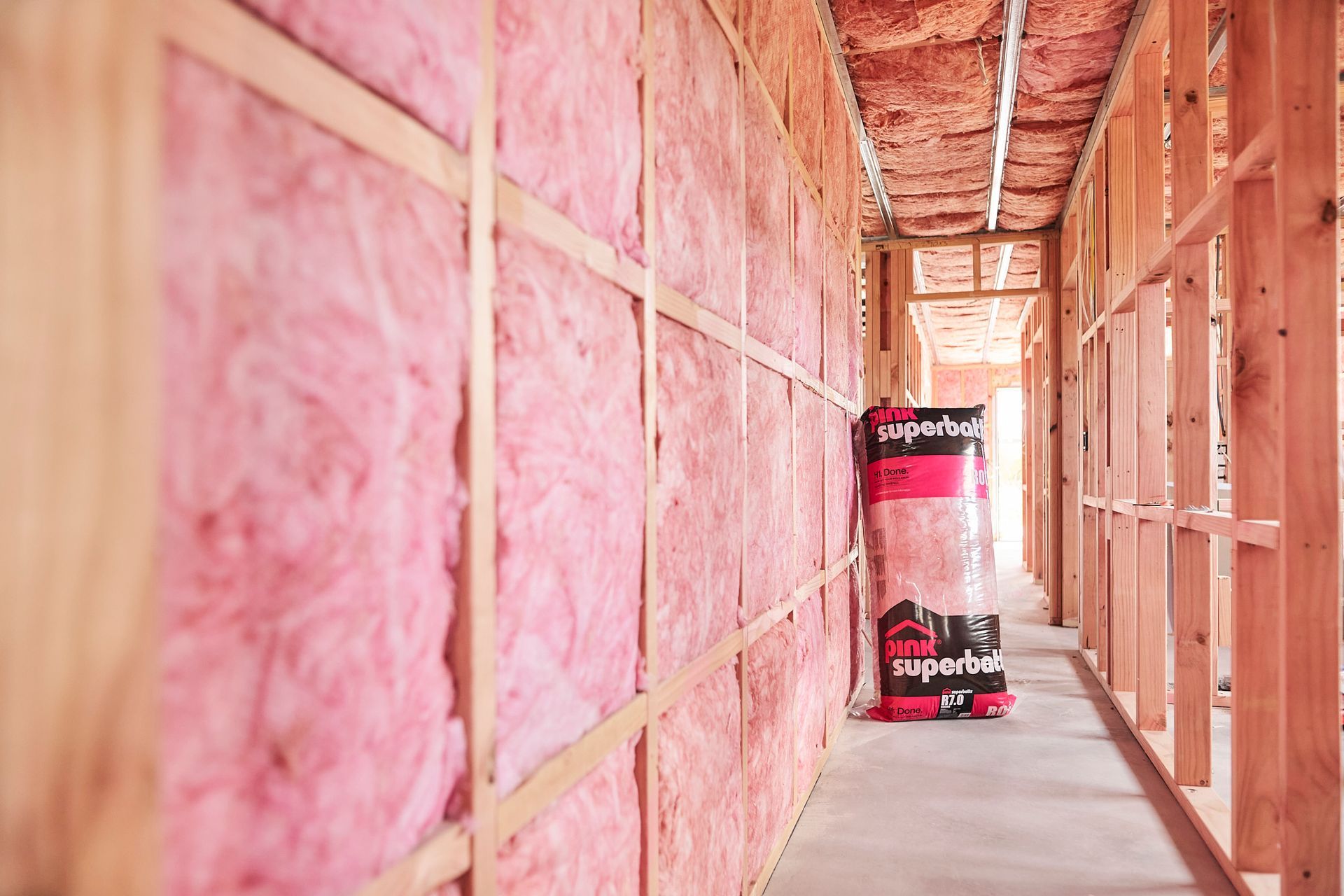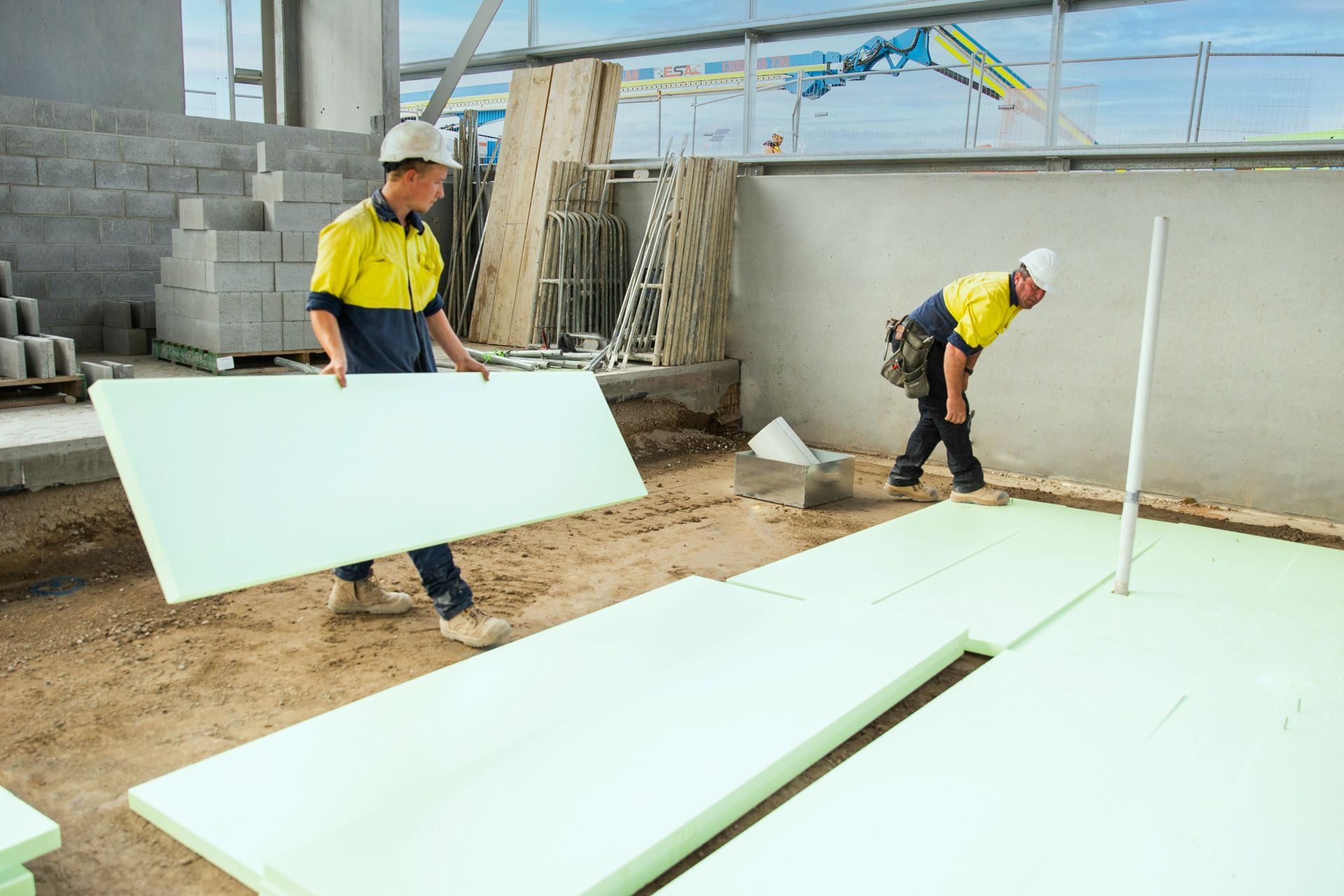Different types of insulation in New Zealand: What option's best for you?
Written by
07 May 2020
•
12 min read

We all want to live in healthy homes that are warm in the winter, cool in the summer, and 'just right' during those in-between months.
What that means in practice is that we want to live in a well-insulated home. The correct insulation is what makes a home comfortable to live in, no matter what the weather's doing outside.
Here’s what you need to know about the different insulating products available, and what options might be best for your home.
Things to consider when choosing insulation materials
1. The R value
Before considering the various insulating materials on offer, it's important to understand the primary metric used to measure their effectiveness as insulators: the R-value.
The R-value of a material is a measure of its thermal resistance or, in other words, its ability to resist heat flowing through it. The higher the R-value, therefore, the better the product is at insulating.
Resisting heat flows is important for keeping warm air inside when it's cold outside, and cool air inside when outside is hot. So while insulation is often thought of as something mostly important for winter, it's still effective in the summer months, keeping homes cooler and minimising the transfer of outside heat to the inside.
The R-value of a product depends on two factors: the thermal conductivity of the material itself and the thickness of said material. This means that for some materials with higher thermal conductivity (that is, those that don't resist heat flow well) the insulation needs to be thicker to make up for it and achieve the same overall R-value.
While there are other factors involved, this is what can partially account for the differences in cost between different materials; those with lower thermal conductivity require more material to achieve the same R-value and therefore insulating effectiveness.
The building code has certain minimum standards for insulation in New Zealand homes, depending on the geographic region the home is in.
That said, the level of insulation required by the building code is the absolute minimum; there’s no reason why you can’t add more. As a rule of thumb, the better insulated your house is, the healthier it’s going to be and the less you’re going to need to spend on heating and cooling it.
The right amount of insulation will depend, in part, on your home's geographic location, framing structure and design, and cladding.

2. Flammability
Some insulation materials are non-combustible while others need to be kept clear of potential heat sources. Regulations mandate that materials meet specific fire performance criteria so consumers are protected from making potentially poor choices because of that.
Those that are not naturally non-combustible are typically treated with flame retardants to ensure they are compliant. While this is highly effective, in some cases, there have been concerns raised about the environmental impact of this chemical presence and processes so it pays to have a conversation about the products you are considering.
3. Safety
Some insulation materials such as glasswool can shed potentially harmful dust, which requires masks to be used when installing. While you're not going to be spending much time in the walls or the roof cavity of your home, if you ever conduct future renovations or install different downlights, for example, this dust can spread.
Other materials could be worth considering for those with allergies or respiratory problems. Again it pays to raise any concerns with your supplier.
4. Reaction to moisture
Insulating materials react differently to moisture, with some losing their insulating properties when wet. Ideally, you won’t have too much moisture to worry about in a newly built home, but it's something to consider if you’re building a home in an area where heavy rain.
Moisture on insulation materials can also lead to mould and mildew which can degrade the product and lead to poor air quality over time.
5. Changes over time
How will the insulating material perform over time? Some materials sag with age, which effectively reduces their thickness and diminishes one-half of the R-value equation, lowering their insulating capabilities.
The longevity of a product also adds to its sustainability credentials, given the large amount of material required to insulate a home. Replacements can also be costly so something that is durable and has a long lifespan will also offer a greater return on investment.
6. Soundproofing
Materials differ in their ability to dampen sound. Depending on the location of your house, this may or may not be a relevant factor, but for those building in cities, near highways or trains, or who engage in loud activities like drum practice, a better sound-insulating material could be worth it.
Good soundproofing in homes is often seen as a highly desirable trait when it comes time to sell a home giving you another reason to bear it in mind.
Related article: What is the most cost-effective cladding in New Zealand?

What are the different types of insulation?
There are several different types of insulation materials available on the market in New Zealand, each with its qualities and characteristics.
1. Fibreglass insulation
The most commonly used material is fibreglass insulation, also known as glasswool insulation. It's made from up to 85 per cent recycled glass, and sometimes has chemical binders added that offer anti-flame and anti-microbial properties.
Its benefits include cost-effectiveness, resistance to combustion and moisture (though it loses insulating value when wet). Regular glasswool insulation can also provide some sound insulation, though specially designed variations are available. It's also long lasting and won't rot.
Glasswool insulation has the potential to shed dust, so care must be taken when installing and/or disturbing existing insulation.
It can be used in walls, as well as ceiling or roof spaces. Some glasswool products can also be used as underfloor insulation.
2. Wool insulation
Wool insulation is a natural product sourced from sheep. As a renewable resource, wool is a popular choice for sustainability purposes. Insulation can be made from both virgin and recycled wool. Part of the manufacturing process includes treatment to stop mould and increase resistance to pests and fire.
Wool can be recycled at the end of its life, which can make it a good choice for those after a sustainable and environmentally friendly insulation material.
Wool needs to be kept dry, as it loses insulation value when wet, and must also be kept away from potential heat sources.
Wool insulation can be used in walls or as ceiling or roof insulation, as well as under suspended floors.
3. Mineral wool insulation
Mineral wool, also known as rock wool, is created from stone and industrial waste. Most products have an average of 75 per cent post-industrial recycled content, which reduces the environmental impact of the material.
Mineral wool is resistant to moisture but should be kept dry for best performance. It's also resistant to rot, and is non-combustible.
Mineral wool can only be used in walls and ceiling cavities. It comes in mat or blanket form, but can also be blown into ceilings using specialist installation equipment.
4. Polyester insulation
Polyester insulation is a man-made fibre, and sometimes contains plastic from recycled bottles. It doesn't rot and has a long life, but like most other materials needs to be kept dry to maintain its insulating characteristics.
A benefit of polyester is that it's soft to touch and doesn't shed fibres like glasswool insulation can. This can make it a good option for those with allergies. It can be used for insulation in walls, ceilings and roofs, as well as underfloor.
5. Polystyrene insulation
A common synthetic material used for underfloor insulation is polystyrene. It comes in the form of a board and can be easily cut to fit in the open spaces under floors. It's water-resistant and extremely lightweight.
While it's often used for underfloor insulation, it can also be used in walls and ceilings. A unique feature of polystyrene is its relatively high thermal resistance compared with other materials, which can make it effective in spaces where there isn't as much room for thick materials.

6. Spray foam insulation
Spray foam insulation serves as an efficient insulating material suitable for both residential and commercial applications. The material is celebrated for its versatility, allowing application in hard-to-reach areas, irregular shapes, and around obstructions, making it ideal for retrofitting older homes and new constructions alike.
It can be used in walls, attics, roofs, basements, crawl spaces, and around windows and doors. It is particularly effective in sealing gaps, joints, and seams, however, professional installation is highly recommended.
7. Cellulose insulation
Cellulose insulation is typically comprised of 85% recycled paper making it a sustainable choice. It's not as prevalent as it once was as more modern materials have become more prominent but still offers strong thermal insulation and, as a form of loose fill insulation, is good for insulating hard-to-reach spaces.
Cellulose insulation is found extensively applied in attics, walls, basements, crawl spaces, and between floor joists, where its ability to be blown in allows for a snug fit that prevents heat loss and reduces sound transmission. The process of densely packing cellulose into these areas ensures that every nook and cranny is filled, maximising thermal efficiency and comfort.
8. Rigid foam board
Rigid foam board insulation stands out for its high thermal resistance, moisture resistance, and durability, offered in various types such as Expanded Polystyrene (EPS), Extruded Polystyrene (XPS), and Polyisocyanurate (PIR).
Rigid foam boards are versatile and easily cut to fit various spaces, are lightweight and resistant to compression making them an excellent choice for enhancing the energy efficiency of homes. In practical applications within the home, rigid foam insulation is ideal for exterior walls, basements, foundations, roofs, attics, and under floors.
9. Foil insulation
Foil insulation was banned in New Zealand in July 2016 due to safety concerns, especially around existing electrical installations. As a result, it can no longer be installed or repaired in this country.
It was frequently used in the subfloor of homes and was an effective, space-saving option. However, the safety concerns around the potential electrocution hazard were a serious risk. If you have foil insulation that is damaged, it should be replaced with one of the alternatives mentioned above.
Related article: 13 types of roofing materials — which is best for your needs?
How to choose the right type of insulation for your home
Now that you know a bit about the different types of insulation as well as the main things to consider, it's time to bring it all together. These tips will help exactly that.
1. Understand your costs and budget
It's important to have an understanding of the costs from the outset of your project so you can plan and budget accurately. On average, the cost to buy and install underfloor and ceiling insulation for a 100m2 home in New Zealand usually comes in at about $3,000 - $5,000.
There are a lot of factors that can influence this i.e. type and amount of product, the complexity of the installation, any removal of old installation etc but you can discuss these specifics with your insulation installer when you meet them.
When thinking about your budget, it's also important to think about the potential long-term savings. Some options may have a higher upfront purchase price but if they're more effective and will lower your heating bills over the winter, then they might offer a better return on investment in the long run.
2. Check if you are eligible for any grants
While we're on money matters, it's also worthwhile to check if you're eligible for any local or government grants, like the Warmer Kiwi Homes programme which covers up to 90% of the costs to purchase and install insulation and an efficient heater if you meet the criteria.
This won't apply to everyone, but it's worth checking out as the topic of healthy homes, especially in older builds, has been an important priority for successive governments for years and every little bit of savings certainly helps.
3. Consider health and safety
This has already been somewhat covered but it's worth reiterating as health and safety is incredibly important. It's particularly true if you'll be handling or installing the product yourself, in which case, you'll want to choose something with low VOCs and take note of the proper way to handle the materials too. This includes accessibility to the spaces and how easy the insulation will be to install too.
Sustainability and environmental impact often fall into this discussion and if it is a personal priority, you may choose to opt for natural materials like wool.
4. Consult a professional
While it is possible to gain a good understanding of the products and installation process yourself, we do strongly recommend consulting an insulation supplier or specialist, especially if you're seeking a solution for an entire house.
Their up-to-date knowledge of all the latest insulating materials and products is invaluable. Combined with their experience in how to overcome all kinds of installation challenges, they are expertly placed to make the best recommendations and see the project through from start to finish.
The most common insulation materials covered — the choice is yours
With the most common insulation materials covered and a list of factors to take into consideration, you are now in a great position to make an informed choice for your home. Whether it's the popular fibreglass choice, the natural appeal of wool or the easy-to-install rigid foam boards, you'll have no trouble finding something that works for your home, keeping you comfortable and content right throughout the year.
(This article was updated on the 22nd November 2024)
Discover an extensive range of high-quality insulation products on ArchiPro

